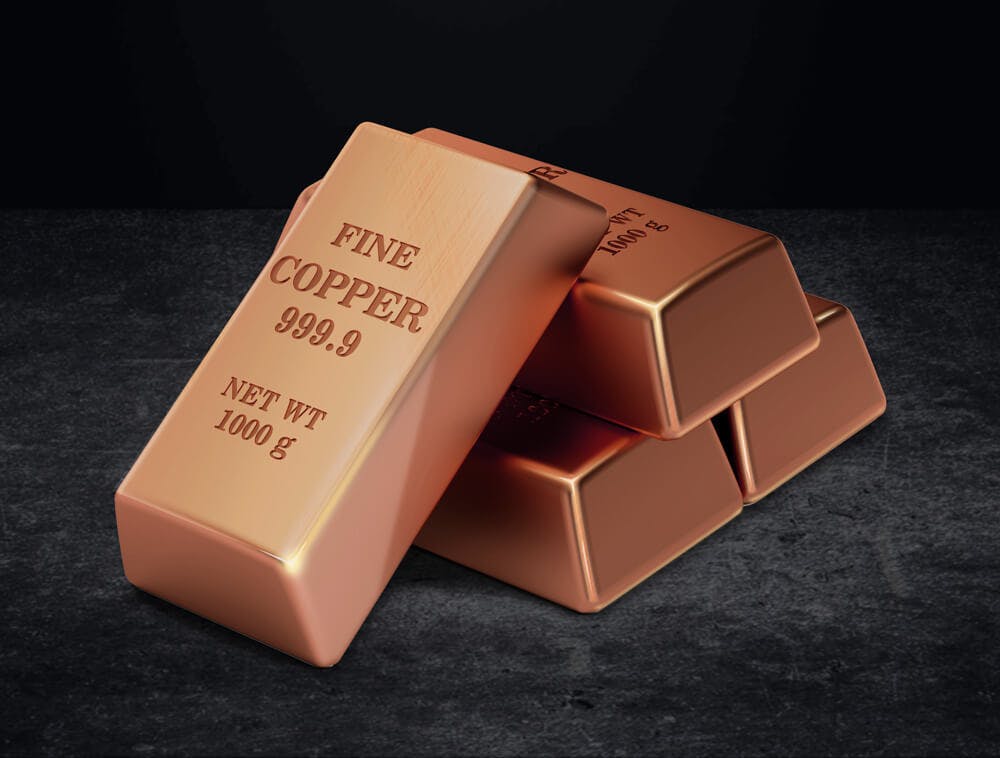Will Copper Price Surge 10% Ignite a Second Inflation Wave?
Trump has announced a 50% tariff on copper imports. The immediate result: U.S. copper prices soared 10%.As domestic copper prices spike, concerns are mounting that renewed and sustained inflation may

Trump has announced a 50% tariff on copper imports. The immediate result: U.S. copper prices soared 10%.
As domestic copper prices spike, concerns are mounting that renewed and sustained inflation may follow—not just a one-off shock.
Copper is widely used and embedded in every corner of the economy. U.S. copper mines and smelters face inherently higher production costs than those in countries like Chile, due to higher labor costs, stricter environmental regulations, and more complex approval processes. As a result, domestic copper prices in the U.S. are likely to remain elevated for an extended period
This kind of “supply-side inflation,” triggered by protectionist trade policies, creates a major headache for macroeconomic management. The Federal Reserve’s main tool to fight inflation is interest rate hikes, which primarily work by curbing “overheating demand.” But tariff-induced inflation is cost-push inflation—driven by rising input costs rather than excessive demand.
If the Fed is forced to keep rates high, or even hike further to contain this type of inflation, it could heavily weigh on business investment and consumer credit, with a significant risk of triggering a recession. This creates a classic dilemma: “support growth” or “fight inflation,” with little room for maneuver.
Why Is Trump Imposing Copper Tariffs?
The primary motivation lies in national strategic resource security. By pushing copper prices higher, Trump hopes to stimulate domestic investment across the entire U.S. copper supply chain.
The U.S. government has already classified copper as a medium-to-long-term “critical mineral.” By 2035, U.S. copper consumption is projected to grow to 3.5 million tons. Without increased domestic production, dependency on copper imports could rise to 60%—up from current domestic production of just 1.1 million tons annually.
Moreover, copper plays a crucial role in defense applications and is the second most-used material by the U.S. Department of Defense.
However, China controls more than 50% of global copper smelting capacity and owns four of the world’s top five refining facilities. The U.S. fears China could one day control copper supplies in the same way it currently dominates rare earths.
The U.S. isn’t short on copper reserves—proven reserves stand at around 47 million tons, ranking seventh globally. Yet despite resource abundance, the high costs of development, strict environmental regulations, and complex legal processes mean it takes a long time for new production to come online in the U.S.
In the past, the U.S. produced around 2.3 million tons of scrap copper annually, with about half exported to China and the other half consumed domestically. In recent years, however, U.S. scrap copper exports have fallen sharply. By early 2025, due to trade barriers and tariffs, U.S. scrap copper exports to China have nearly dropped to zero, significantly reducing overall export volumes.
In response, the U.S. has been investing heavily in domestic recycling and processing capacity, including building new large-scale recycling refineries, aiming to cut back scrap copper exports and reduce dependence on external processing.
The cost of recycling and reprocessing scrap copper is significantly lower than that of primary copper (refined directly from ore). Scrap copper can be re-smelted or used directly in copper production after minimal processing, with lower energy consumption and pollution—making it a “low-cost, high-efficiency” supplement to copper supply. This is the core logic behind the U.S.’s recent push to enhance domestic scrap copper recycling capacity.
Today, however, this recycling capacity has already absorbed most available scrap copper. To achieve further self-sufficiency, the only path left is to mine more and build more smelting capacity. But with international copper prices too low, domestic capital has no incentive—there’s no profit to be made. Tariffs change that equation: by raising prices, they encourage profit-seeking capital to flow into the copper supply chain.
Dr. Copper Loses Its “Doctor” Status
Copper prices have long been closely tied to macroeconomic conditions, earning copper the nickname “Dr. Copper” for its ability to “predict” economic cycles.
However, after Trump’s tariff hike, COMEX copper prices will no longer reflect the true health of the U.S. economy. Instead, they will increasingly mirror the impact of trade barriers. Once the tariffs take effect, U.S. domestic copper prices and copper prices in the rest of the world will begin to diverge.
This is already visible in pricing trends. The London Metal Exchange (LME) remains the global benchmark for copper prices. Copper that was originally destined for the U.S. will, due to high tariffs, be redirected to other markets, leading to relative oversupply outside the U.S. This will exert downward pressure on global copper prices quoted on the LME, even as U.S. domestic copper prices remain elevated.
Disclaimer: The views in this article are from the original Creator and do not represent the views or position of Hawk Insight. The content of the article is for reference, communication and learning only, and does not constitute investment advice. If it involves copyright issues, please contact us for deletion.